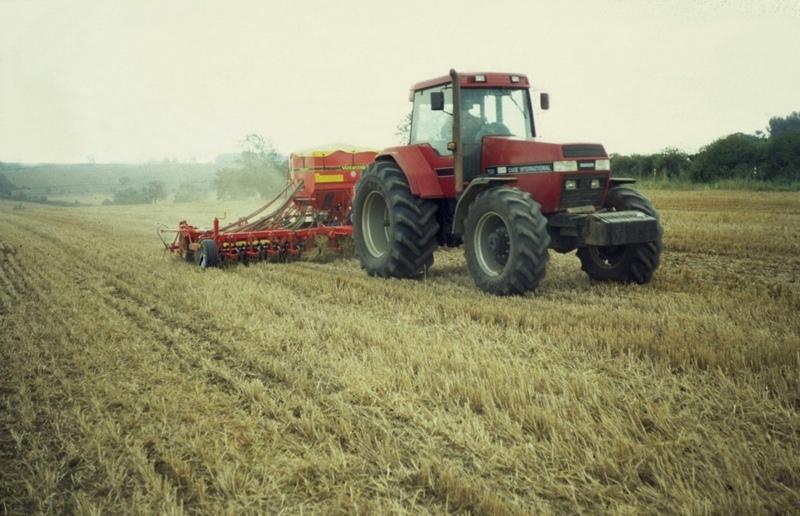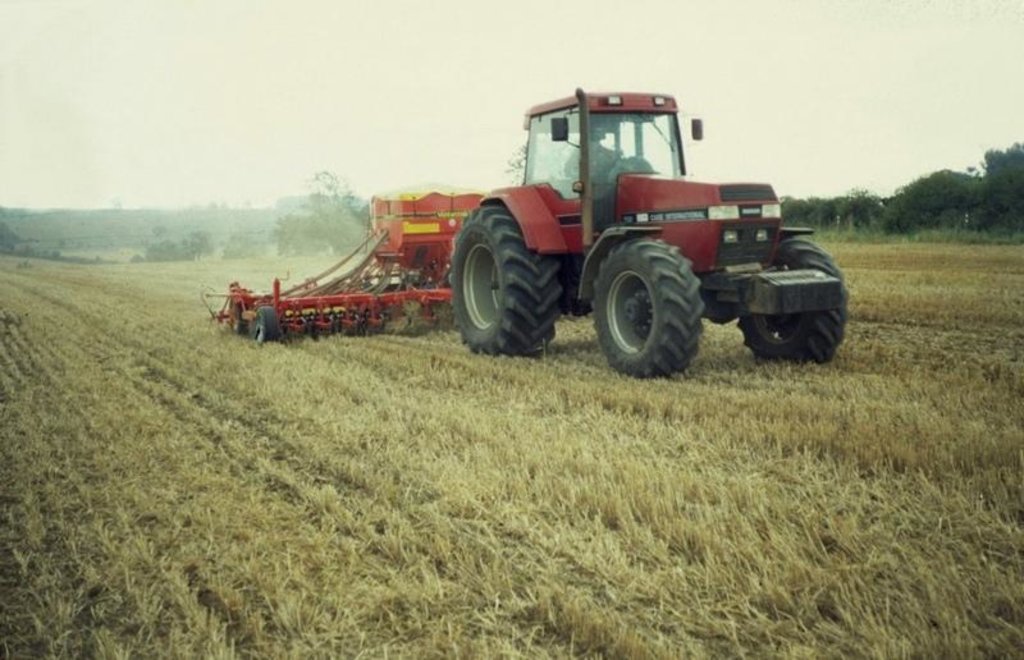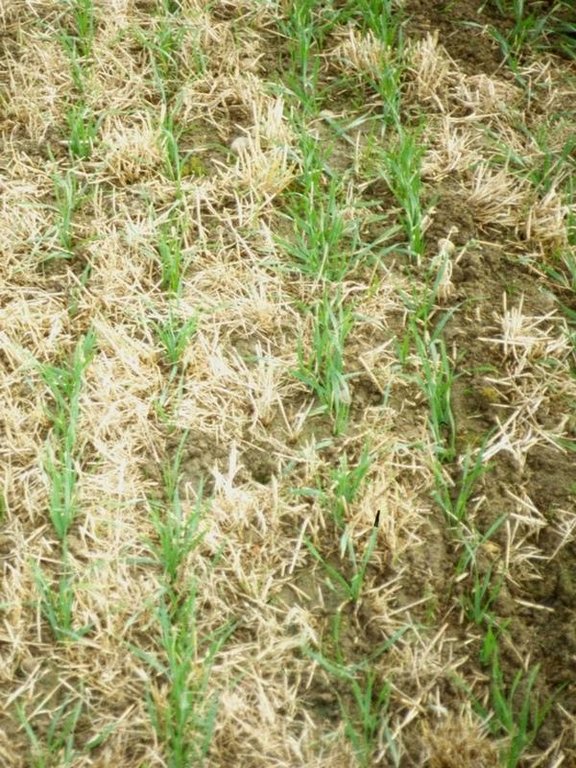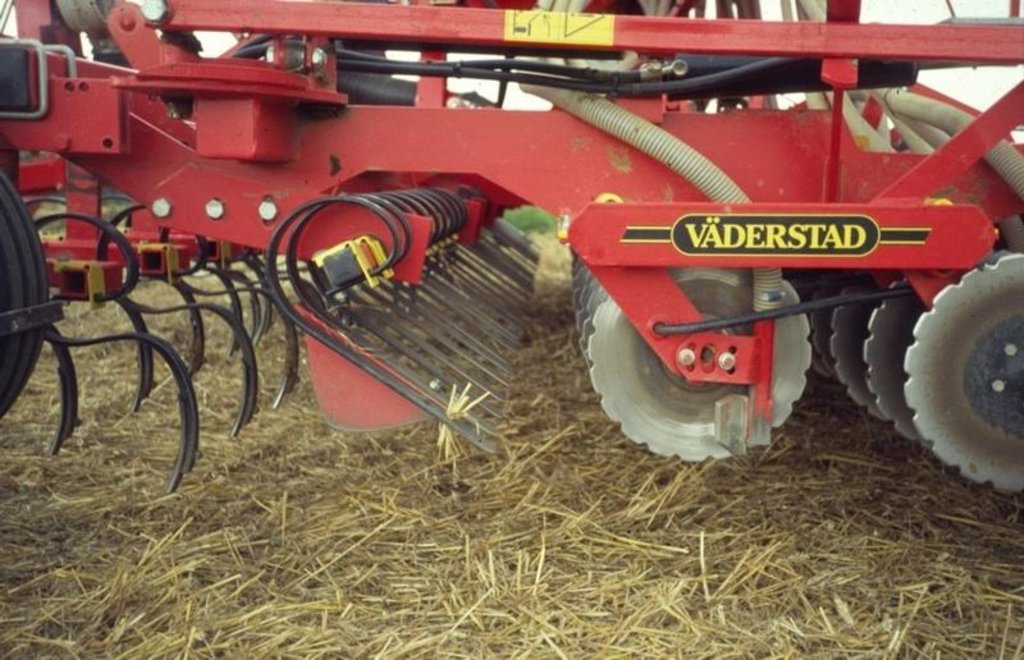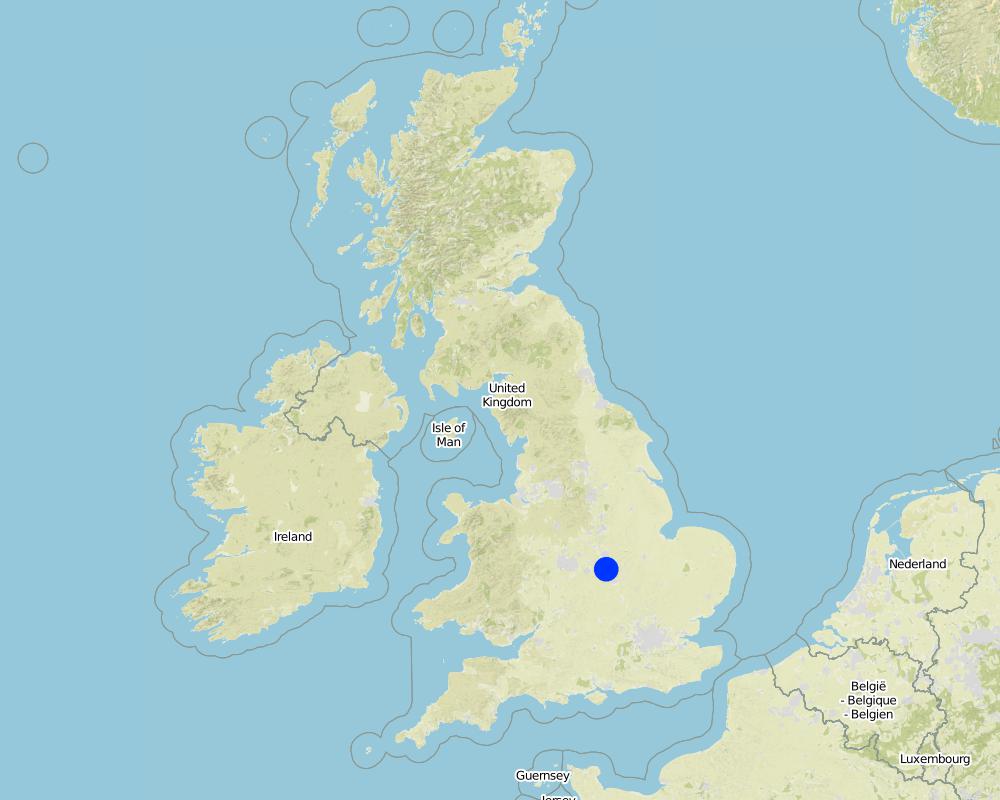Conservation agriculture [United Kingdom]
- Creation:
- Update:
- Compiler: Alastaire Leake
- Editor: –
- Reviewers: Alexandra Gavilano, Fabian Ottiger, Deborah Niggli
non-inversion tillage, incorporation of crop residues, non-selective herbicides
technologies_987 - United Kingdom
View sections
Expand all Collapse all1. General information
1.2 Contact details of resource persons and institutions involved in the assessment and documentation of the Technology
Name of project which facilitated the documentation/ evaluation of the Technology (if relevant)
Soil and water protection (EU-SOWAP)Name of project which facilitated the documentation/ evaluation of the Technology (if relevant)
Book project: where the land is greener - Case Studies and Analysis of Soil and Water Conservation Initiatives Worldwide (where the land is greener)Name of the institution(s) which facilitated the documentation/ evaluation of the Technology (if relevant)
Game & Wildlife Conservation Trust - United Kingdom1.3 Conditions regarding the use of data documented through WOCAT
The compiler and key resource person(s) accept the conditions regarding the use of data documented through WOCAT:
Yes
1.5 Reference to Questionnaire(s) on SLM Approaches (documented using WOCAT)
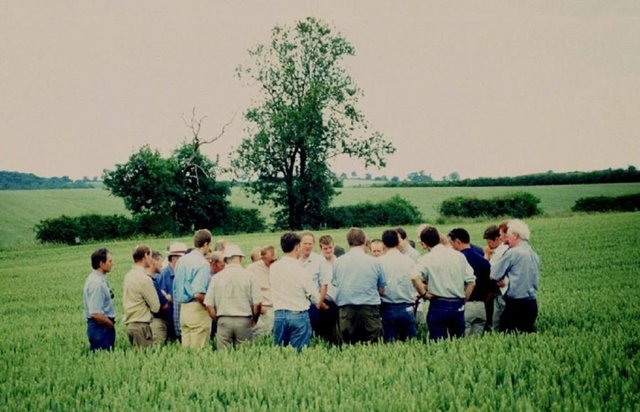
Soil management initiative [United Kingdom]
An independent organisation that promotes the adoption of appropriate soil management practices, especially conservation agriculture, within England.
- Compiler: Alastaire Leake
2. Description of the SLM Technology
2.1 Short description of the Technology
Definition of the Technology:
Improved soil management based on non-inversion tillage for cost-effective and timely crop establishment.
2.2 Detailed description of the Technology
Description:
Conservation agriculture (CA), involving superficial non-inversion tillage, began to be widely taken up in England following advances in seed drill technology, non-selective herbicides and straw-chopping combine harvesters in the late 1980s.
This case focuses on the Game Conservancy Trust’s Allerton Project at Loddington, which in 2000 pooled resources with its neighbour to purchase a single set of cultivation equipment, and replaced conventional mouldboard ploughing (with its multiple cultivations) by state-of-the-art CA. Contract services offered by the joint venture means that 1,000 ha are now covered each year. The main winter crops are wheat, oats, and oilseed rape. Beans are sown in the spring. The heavy clay loam is vulnerable to excessive surface moisture, restricting crop establishment
‘windows’.
Immediately after harvest the soil is loosened and straw incorporated, and then soil is consolidated (using a ‘cultivation train’ combining two machines: the ‘Simba Solo’ and the ‘Cultipress’). This encourages up to 60% of the weeds to emerge in a ‘stale seedbed’. Spraying then removes all the weeds and volunteer plants of previous crops. This is followed by a light surface tillage, using the ‘Väderstad Rapid Cultivator Drill’, before sowing into the seedbed created. Equipment comprises implements with tines and/or discs which create a tilth to around 10 cm
without inverting the soil. Cambridge rollers are then used to consolidate the sown land. After crop maturity, combine harvesting takes place - with simultaneous chopping of straw/crop residues. A trash rake is used to disperse the chopped straw. This way excessive trash is incorporated rapidly into the soil. Compaction may arise in the transition phase, because of the lack of soil loosening through ploughing: minimising traffic, keeping to tramlines and headlands can all help. In time, increases in soil organic matter content and earthworm biomass make compaction less of a problem. The problem of slugs can be reduced by improving seed-to-soil contact, and by drilling deeper.
Purpose of the Technology: The main purpose of conservation agriculture is cost effective, timely and rapid crop establishment, under good soil conditions. High-speed operations are the key. Compared with conventional ploughing, labour is saved and fuel costs lowered. However, an additional application of herbicides represents an extra expenditure. Yields per hectare haven’t risen but the key difference is that about four times as many hectares can be prepared in time for autumn planting under conservation tillage, thus improving overall production. Incorporation of crop residues improves soil structure and leads to a more friable, less erodible topsoil.
2.3 Photos of the Technology
2.5 Country/ region/ locations where the Technology has been applied and which are covered by this assessment
Country:
United Kingdom
Region/ State/ Province:
Leicestershire
Comments:
Total area covered by the SLM Technology is 10 km2.
Map
×2.7 Introduction of the Technology
Specify how the Technology was introduced:
- through projects/ external interventions
3. Classification of the SLM Technology
3.1 Main purpose(s) of the Technology
- reduce, prevent, restore land degradation
3.2 Current land use type(s) where the Technology is applied

Cropland
- Annual cropping
Annual cropping - Specify crops:
- legumes and pulses - beans
- cereals - oats
- cereals - wheat (winter)
- oilseed crops - sunflower, rapeseed, other
Number of growing seasons per year:
- 1
Specify:
Longest growing period in days: 330Longest growing period from month to month: Mar - Dec
Comments:
Major land use problems (compiler’s opinion): Traditional inversion tillage is slow and costly. By moving to high speed non-inversion conservation tillage farmers can
spread costs over a larger area and maximise the area under winter crops. The speed at which ground can be worked in the autumn is critical: one month earlier planting can mean an extra ton in cereal yield.
3.4 Water supply
Water supply for the land on which the Technology is applied:
- mixed rainfed-irrigated
3.5 SLM group to which the Technology belongs
- minimal soil disturbance
3.6 SLM measures comprising the Technology
3.7 Main types of land degradation addressed by the Technology

soil erosion by water
- Wt: loss of topsoil/ surface erosion
- Wg: gully erosion/ gullying

chemical soil deterioration
- Cn: fertility decline and reduced organic matter content (not caused by erosion)
Comments:
Main type of degradation addressed: Wt: loss of topsoil / surface erosion, Wg: gully erosion / gullying, Cn: fertility decline and reduced organic matter content
3.8 Prevention, reduction, or restoration of land degradation
Specify the goal of the Technology with regard to land degradation:
- reduce land degradation
4. Technical specifications, implementation activities, inputs, and costs
4.1 Technical drawing of the Technology
Technical specifications (related to technical drawing):
Technical knowledge required for field staff / advisors: high
Technical knowledge required for land users: moderate
Main technical functions: improvement of ground cover, increase in organic matter, increase of infiltration, improvement of soil structure, increase in soil fertility
4.5 Maintenance/ recurrent activities
| Activity | Timing/ frequency | |
|---|---|---|
| 1. | Loosen the soil and incorporate the straw using the ‘Simba Solo’; soil consolidation, using the 'Cultipress' | immediately post-harvest / |
| 2. | Spray the stale seedbed to remove all the weeds/volunteer plants of previous crops | mid September |
| 3. | Light surface tillage and sowing into the seedbed; using the 'Väderstad Rapid Cultivator Drill' | usually end September, just after spraying |
| 4. | Consolidation of the sown land | using Cambridge rollers |
| 5. | After crop maturity, combine harvesting - with simultaneous chopping of straw | |
| 6. | Disperse the chopped straw, using a trash rake. |
4.6 Costs and inputs needed for maintenance/ recurrent activities (per year)
| Specify input | Unit | Quantity | Costs per Unit | Total costs per input | % of costs borne by land users | |
|---|---|---|---|---|---|---|
| Equipment | Machine use | ha | 1.0 | 180.0 | 180.0 | 100.0 |
| Total costs for maintenance of the Technology | 180.0 | |||||
| Total costs for maintenance of the Technology in USD | 180.0 | |||||
4.7 Most important factors affecting the costs
Describe the most determinate factors affecting the costs:
No establishment costs for purchase of special conservation tillage equipment are included here – though this
investment is considerable. Tractors of sufficient horsepower and a couple of special machines (see above) are needed. The investment in this case was shared by two neighbouring farms, who implemented conservation agriculture on a joint venture basis. The only costs presented in the table above are total recurrent annual costs for tillage operations. This total, US$ 180, compares with US$ 260 for conventional tillage operations. While drilling is not included in the above conventional tillage calculation, subsequent application of additional herbicides represents an extra cost of conservation tillage of about US$ 80/ha. In balance the costs per hectare are broadly similar. Labour inputs however are reduced considerably as a proportion: the Allerton farm with its 260 ha of arable land is operated by a farm manager and just one farm worker.
5. Natural and human environment
5.1 Climate
Annual rainfall
- < 250 mm
- 251-500 mm
- 501-750 mm
- 751-1,000 mm
- 1,001-1,500 mm
- 1,501-2,000 mm
- 2,001-3,000 mm
- 3,001-4,000 mm
- > 4,000 mm
Agro-climatic zone
- sub-humid
Thermal climate class: temperate
5.2 Topography
Slopes on average:
- flat (0-2%)
- gentle (3-5%)
- moderate (6-10%)
- rolling (11-15%)
- hilly (16-30%)
- steep (31-60%)
- very steep (>60%)
Landforms:
- plateau/plains
- ridges
- mountain slopes
- hill slopes
- footslopes
- valley floors
Altitudinal zone:
- 0-100 m a.s.l.
- 101-500 m a.s.l.
- 501-1,000 m a.s.l.
- 1,001-1,500 m a.s.l.
- 1,501-2,000 m a.s.l.
- 2,001-2,500 m a.s.l.
- 2,501-3,000 m a.s.l.
- 3,001-4,000 m a.s.l.
- > 4,000 m a.s.l.
5.3 Soils
Soil depth on average:
- very shallow (0-20 cm)
- shallow (21-50 cm)
- moderately deep (51-80 cm)
- deep (81-120 cm)
- very deep (> 120 cm)
Soil texture (topsoil):
- medium (loamy, silty)
- fine/ heavy (clay)
Topsoil organic matter:
- low (<1%)
If available, attach full soil description or specify the available information, e.g. soil type, soil PH/ acidity, Cation Exchange Capacity, nitrogen, salinity etc.
Soil fertility is medium
Soil drainage/infiltration is medium
Soil water storage capacity is medium
5.6 Characteristics of land users applying the Technology
Market orientation of production system:
- commercial/ market
Indicate other relevant characteristics of the land users:
Off-farm income specification: contract work on other farms is an important source of additional revenue for the ‘joint venture’ of the two neighbouring farms
5.7 Average area of land used by land users applying the Technology
- < 0.5 ha
- 0.5-1 ha
- 1-2 ha
- 2-5 ha
- 5-15 ha
- 15-50 ha
- 50-100 ha
- 100-500 ha
- 500-1,000 ha
- 1,000-10,000 ha
- > 10,000 ha
5.8 Land ownership, land use rights, and water use rights
Land ownership:
- company
- individual, titled
Land use rights:
- leased
- individual
6. Impacts and concluding statements
6.1 On-site impacts the Technology has shown
Socio-economic impacts
Production
crop production
Comments/ specify:
Reduced yields in the early years (due to initial compaction)
Income and costs
farm income
Socio-cultural impacts
community institutions
national institutions
SLM/ land degradation knowledge
conflict mitigation
Ecological impacts
Water cycle/ runoff
surface runoff
excess water drainage
Soil
soil moisture
soil cover
soil loss
soil organic matter/ below ground C
Other ecological impacts
Carbon sequestration
Loss of nutrients (through leaching)
Biodiversity enhancement
Comments/ specify:
Above and below ground
Soil structure
Organic matter depletion (in certain sandy soils)
Reliance on herbicides
6.2 Off-site impacts the Technology has shown
downstream flooding
downstream siltation
groundwater/ river pollution
wind transported sediments
6.4 Cost-benefit analysis
How do the benefits compare with the establishment costs (from land users’ perspective)?
Short-term returns:
negative
Long-term returns:
positive
How do the benefits compare with the maintenance/ recurrent costs (from land users' perspective)?
Short-term returns:
positive
Long-term returns:
very positive
6.5 Adoption of the Technology
Comments:
There is a strong trend towards spontaneous adoption of the Technology
Comments on adoption trend: Extent of adoption depends on farm size, enterprise & soil type. From 10% in 95, approx 40% of arable land in Eng is currently (04) under conservation agriculture/cultivation tillage.
Additional info: Farmers involved adopted the system without incentives other than those of timeliness, lower cost, speedier crop establishment, reduced soil erosion & benefits to wildlife. There is significant growing spontaneous adoption: the extent of adoption depends on farm size, enterprise & soil type. Editors’ comments: Conservation agriculture is rapidly catching on throughout the world. While most attention has been focussed on the Americas, a revolution is taking place in Europe also. In England, for example, around 40% of the large scale arable area is now under CA – a rise from just 10% a decade ago. CA helps to minimise costs and reduce local, and global, environmental impacts. This is a case from a leading proponent of CA in England. Comparative case studies are documented from Morocco, Australia and Kenya.
6.7 Strengths/ advantages/ opportunities of the Technology
| Strengths/ advantages/ opportunities in the land user’s view |
|---|
|
Increases soil biota (more than doubling earthworm mass) and biodiversity generally (nearly doubling the number of different organisms) How can they be sustained / enhanced? Maintain system over time to maximise these benefits. |
| Strengths/ advantages/ opportunities in the compiler’s or other key resource person’s view |
|---|
|
Lowers recurrent soil tillage costs – mainly due to reduction in fuel use (down by about one third) and labour (saving around one person day per hectare) How can they be sustained / enhanced? Spread over greater area to maximise cost reduction. |
|
ncreases overall farm yield (and income) by speeding up land preparation in autumn, allowing a larger area to be planted as winter crops How can they be sustained / enhanced? Ditto. |
|
Improves soil structure and physical properties in various ways How can they be sustained / enhanced? Maintain system over time to maximise these benefits. |
|
Reduces runoff (by a half), soil erosion (by two thirds), and leaching of nutrients (by three quarters) thus decreasing movement of phosphates and nitrates to streams and rivers How can they be sustained / enhanced? To improve further, combine with other measures such as adding organic matter or growing green manures and cover crops. |
|
Increases soil buffering capacity against climatic extremes (especially rainfall) through maintaining surface cover and building up soil organic matter How can they be sustained / enhanced? Maintain system over time to maximise these benefits. |
6.8 Weaknesses/ disadvantages/ risks of the Technology and ways of overcoming them
| Weaknesses/ disadvantages/ risks in the compiler’s or other key resource person’s view | How can they be overcome? |
|---|---|
| Increased growth of grass weeds and thus greater cost of herbicides | Use ‘stale seedbeds’ – surface tillage immediately post-harvest to induce weed germination – followed by spraying. Crop rotation, spring cropping, occasional ploughing (every few years as necessary). |
| Not suitable for all soil types (not appropriate on some sandy soils) | Don’t introduce/promote CA indiscriminately. |
| Excessive surface trash/crop residues | Good chopping, then spreading and incorporation. |
| Problems with slugs | Drill seed deeper, ensure good seed-to-soil |
| Surface compaction in the early stages of conversion to conservation agriculture | Appropriate loosening of soil, using tined implement. |
7. References and links
7.1 Methods/ sources of information
7.2 References to available publications
Title, author, year, ISBN:
Soil Management Initiative/Department for Environment, Food and Rural Affairs (DEFRA) A guide to managing crop
establishment.. (undated).
Available from where? Costs?
SMI, UK (www.smi.org.uk)
Title, author, year, ISBN:
Soil Management Initiative Improved soil management for agronomic and environmental
gain.. (undated).
Available from where? Costs?
SMI, UK(www.smi.org.uk)
Title, author, year, ISBN:
Soil Management Initiative/Väderstad Target on establishment: innovation for the future of farming.. (undated).
Available from where? Costs?
SMI, UK(www.smi.org.uk)
Links and modules
Expand all Collapse allLinks

Soil management initiative [United Kingdom]
An independent organisation that promotes the adoption of appropriate soil management practices, especially conservation agriculture, within England.
- Compiler: Alastaire Leake
Modules
No modules


